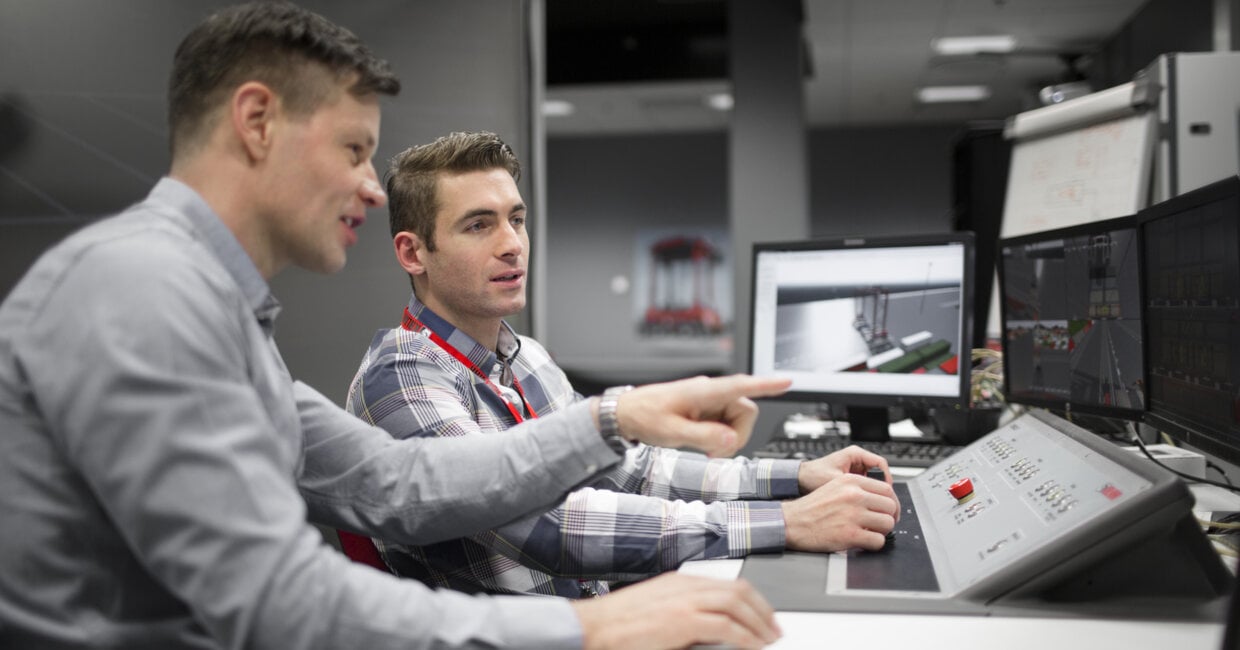
Employee experience: How to hire – and keep – the best
A superior user experience is relevant not only for the relationship between companies and customers, but also between companies and employees. In fact, it is a key factor in attracting and retaining the top professionals that today's companies need to succeed and thrive. Ports and terminals are not immune to these changes either, and solution providers can help the industry to keep up with the transformation required by the future workforce.
In our previous blog posts, we talked about how the concept of user experience (UX) can create significant added value for companies designing products and services, or even enable radically new business and revenue models – all without adding much to the financial overheads involved. UX can be conceptualised in many ways, but the definition we adopted was that UX at work is the way a person feels about using a product, service, or system in a work context, and how this shapes the image of oneself as a professional.
Let's think about the previous sentence for a second. Traditionally the work environment in ports and terminals has been physically straining with noisy equipment and shift work. Could UX design actually be relevant for us as employers, too?
Wow-quality experience
The young professionals currently beginning their careers are the first generation that has grown up since childhood to expect a wow-quality experience from their devices and services. In the real world, the consumer votes with their wallet and buys whichever phone, tablet or computer they like best. In the workplace, the procurement department usually procures a set of standardised tools that meet a predefined specification at the most competitive price. But what does this mean for the UX of the employee? In any field, the best talents have the luxury of choosing between multiple prospective employers. How can we ever hope to attract them, if we are not able to provide them with the best tools – and, more importantly – a great workplace experience?
Here is where digitisation of port operations can help. Automation enables working from the comfort of an office with advanced features and cutting edge technology. Remote controlling and computer gaming have similar aspects to them that are appealing to many and can provide the “wow” effect future port workers are looking for in their jobs.
No more jobs for life
This is not just theoretical speculation. The entire concept of employment has been undergoing a gradual but radical shift over the last few years. Traditional lifelong careers in the service of a single employer have become a historical curiosity for today's young professionals. Digitalisation and the convergence of mobile and online technologies are transforming business models in every field, along with the ways we work, lead our teams and interact with our customers. The user experience is always at the very core of these developments.
Even in relatively traditional fields such as port operations and industry, the younger generation is accustomed to using modern online tools and smart devices, so we need to be able to offer them the same experience no matter what their field of work is. Physical labour, traditional working methods and outdated, painful-to-use business software simply does not cut it anymore.
We also need to remember that as employers, we are competing not just with the players in our own field, but with other industries as well. If you think this is not relevant for your company, you may be in some trouble without realizing it. Top talents are always a scarce resource, and the choice between taking a job at a container terminal or a high-profile consulting firm could hinge on how well the employer succeeds in creating a high-quality work experience for their people. Are they providing the best tools for the job? Are they actively involving their staff in designing not only the products and services they sell, but also their own work? Are employees given genuine agency to manage the changes that they face together with their employers?
Great UX in the workplace helps create drive in everyday tasks, streamlines collaboration and makes learning faster.
Motivated employees perform better
Great UX in the workplace helps create drive in everyday tasks, streamlines collaboration and makes learning faster. And it tells a lot about how people are valued in the company. Motivated employees are a major part of ensuring strong results for any business; if you keep your employees satisfied, it is more than likely that they will keep your customers satisfied too.
Just as a "wow"-quality user experience can't be tacked onto a product at the last moment, striving towards a superior employee experience needs to be a central part of a company's culture, if it is to have any hope of attracting and keeping the best talents in the industry, and getting the full benefit of what they can offer. Can we make it feel great to come to work at this company every day? Many companies clearly succeed in this, so why couldn't we – and you?
Jari Hämäläinen
Director, Terminal Automation, Kalmar
Maaria Nuutinen
Vice President in Business, Innovation and Foresight at VTT Technical Research Centre of Finland Ltd
This article was co-authored with Maaria Nuutinen. Nuutinen was programme manager of the FIMECC UXUS programme (2010-2015). Her passion is to understand and help human and organisational activity in the context of technology enabled business. She is particularly interested in developing ways for enhancing mind set change and value co-creation based on user and customer experience. Her research interests include organisational culture, change management and service innovations. She is a Vice President in Business, Innovation and Foresight at VTT Technical Research Centre of Finland Ltd. Maaria Nuutinen received her PhD in psychology from the University of Helsinki in 2006. This post has been published also in VTT’s blog.
Related articles
Further reading
Subscribe and receive updates in your email
Unsere Veröffentlichungen abonnieren

